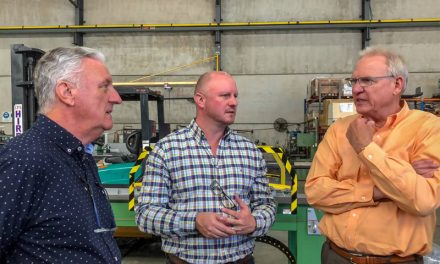Architects are embracing the challenges of creating low-carbon solutions. By Michael Smith
The return of the New Zealand Timber Design Awards after a three-year absence due to the pandemic has been keenly awaited. Now organised by Timber Unlimited (previously the Timber Design Centre), the awards cover projects completed in the period July 2019 to December 2022.
Debbie Fergie, spokesperson for Timber Unlimited, says determining the finalists across the 12 available categories (some new and others revised) was no easy task. “All entries show innovation, aesthetic appeal, creativity and practicality – made possible through the use of timber,” says Fergie.
“It’s obvious that the architecture, manufacturing and engineering sectors in New Zealand are ready to embrace the challenges of creating low-carbon timber solutions by incorporating state-of-the-art technology with innovative applications of timber and a variety of engineered wood products.”
While the awards were yet to be held at the time of writing for the print edition, these were two of our favourite projects. The ultimate winner on the night was the Green School Kina (see main image), which incorporates multiple timbers into its nature-based design that is designed to inspire learning.

Taranaki Base Hospital: shifting expectations of what is possible in sustainable healthcare architecture.
TE HUHI RAUPO
Prominent in the revised ‘Commercial & public building design award’ category is the Taranaki Base Hospital’s renal dialysis clinic (Te Huhi Raupo), by Warren & Mahoney. The clinic houses 12 dialysis treatment chairs, consultation and training rooms, and a reverse osmosis water treatment plant.
According to the architects, the project’s energy-efficient, low-carbon design and use of locally sourced mass timber “shift expectations of what is possible in sustainable healthcare architecture”.
The design is a bridge-like structure that utilises a “Woodspan parallel laminated timber (PLT) platform, with driven timber pole foundations and lightweight timber framed roof and wall structure, to span a natural valley between the hospital and a residential street”.
The warm and earthy tones of reclaimed Australian tallowwood (Eucalyptus microcorys) used in cladding, boardwalk, canopy posts and balustrades “achieve a natural, non-clinical aesthetic with a positive carbon impact”.
Meantime, the clinic’s interior features a carved American ash reception counter, birch plywood linings and European oak flooring – creating a warm and welcoming environment for its regular patients.

Te Whare-iti: affordable homes to fit diverse buyer requirements.
TE WHARE-ITI
Among the new categories this year is the ‘Innovative timber manufacturing & technology award’, which focuses on providing design and manufacturing solutions due to advances in technology.
Te Whare-iti: Dorking Road House, by Aonui Architecture, responds to the need for affordable homes to fit diverse buyer requirements. In essence, it is an offsite-manufactured, crane-delivered modular home that uses Pinus radiata cross-laminated timber as the primary structure.
Richard Wright, Principal of Aonui Architecture, founded the practice some 20 years ago in response to the growing need and awareness among clients for environmentally responsible and energy-efficient buildings.
“Aligning our designs as closely as possible with natural systems has led to us exploring passive solar design, natural ventilation and low-embodied energy materials over many projects,” says Wright.
At a forest conference in 2018 Wright met Marty Verry of Red Stag Timber and learned about the company’s soon-to-be-launched cross-laminated timber plant.
That same year, Aonui Architecture was one of six winners (for Te Whare-iti) in the Prefab NZ SNUG house competition, which provided a vehicle for the smart use of CLT in infill housing. Wright sold the manufacturing rights to another related company, Wright Industrial, which now manufactures Te Whare-iti modular houses at an assembly line in Porirua, near Wellington.
He says the modular houses are delivered to site by truck and crane 90% completed: “The assembly program for a typical two- or three-bedroom Te Whare-iti is nine weeks – from contract signing to completion at the Porirua OSM facility.
“Trucking and cranage occurs on a single day, and installation on most sites takes four weeks. That time is spent connecting modules to modules, modules to piles, in-ground services, and decks and steps.”
Wright adds that groundworks proceed in conjunction with offsite manufacturing. “Sites are prepared by scraping off vegetative surface layers and exposing existing or laying new inground services. Pile depths are determined by geotechnical investigation of often sloping sites, and the piles are then installed in multiples of three to carry the three LVL bearers that underlie every module. They are either standard house piles or round timber poles – encased in concrete.
“Bracing on taller piles is bolted timber. Steel screw piles will be used in any situation where it is impractical to use heavy timber and concrete.”
The panel-to-panel fixings are a simple system of high-performance screws driven by hand tools through the unseen external or strapped internal walls. “Entire walls and ceilings are preserved unblemished, and finished with several coats of linseed oil for a silky, glowing patina,” Wright says.
“Joints incorporate a proprietary acoustic tape applied during assembly, creating a pleasing negative detail that is a feature of these houses. Continuing the stripped-back aesthetic, skirtings and architraves are omitted with doors and windows where the monolithic quality of CLT provides a simple attractive alternative.”
He notes that a Te Whare-iti OSM house has only 10% of the embodied energy of a conventional onsite-constructed NZ house. “The specific calculation relates to the construction phase – while operational phase figures are not specific to Te Whare-iti, so the BRANZ standard NZ house data has been used,” says Wright.
“The expectation is that, with further research and calculation, the carbon footprint of Te Whare-iti will be found to be lower again.”
Wright says the post-Covid shortage of standard building materials had minimal impact on Te Whare-iti construction as there is no structural steel or plasterboard used – and very few other products that can’t be sourced locally.
“Wool insulation is readily available and always used,” he says. “Radiata for the CLT comes from company-owned forests that have an almost endless capacity to provide logs. A typical two-bedroom modular house comprises 24 separate CLT panels. That is a small production run at the CLT plant, which Red Stag advises fits nicely in the pauses between larger projects.”
Te Whare-iti: Dorking Road House won a Highly Commended award in its category.
See all the winners at https://timberunlimited.co.nz/get-involved/timber-design-awards/tda-winners. For the full set of finalists, visit https://timberunlimited.co.nz/get-involved/timber-design-awards/2023-timber-design-awards-finalists
Main image: The Green School Kina was the Supreme Award winner, with judges declaring it an outstanding project.











